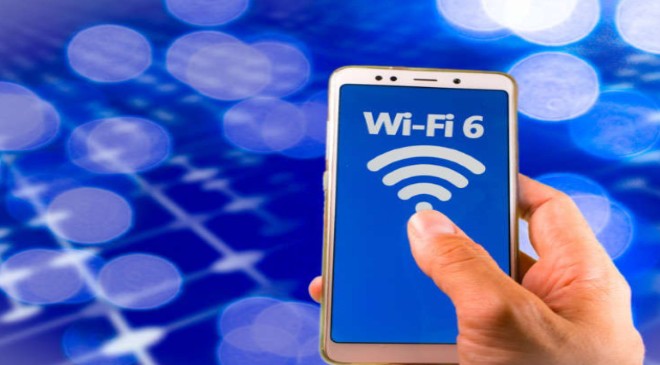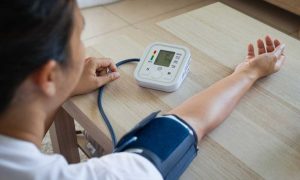If you’re struggling with a poor cellular signal at home or work, you might want to learn how to turn on Wi-Fi calling. It’s available on most modern smartphones, including Android and iOS devices, and is useful when you have a poor signal. Below we’ll show you how to enable it on your iOS or Android device.
Also Read– Apple Watch Ultra refresh coming this year, larger 30-inch plus iMac in early development
What is Wi-Fi Calling?
Wi-Fi calling is a feature that allows you to make and receive phone calls and text messages over a Wi-Fi network instead of using your cellular network. You can make calls and send messages even if your cellular signal is weak, provided you have a Wi-Fi connection. The speed of your call or text depends on the strength and speed of your Wi-Fi Internet connection.
You typically need a compatible device and a Wi-Fi network that supports it. You also need to enable it on your phone and have good cellular service. Once enabled, you only need to connect to a Wi-Fi network to make a call.
Wi-Fi calling uses data from your Wi-Fi network. If you have a limited data plan, then calling over Wi-Fi may use up some of your network data. But it’s cheaper in the long run and helpful when making international calls.
How to Turn on Wi-Fi Calling on iPhone: Step-by-Step
Want to use Wi-Fi calling on your phone? Simply follow the steps below to enable this feature.
Step 1: Check if Your Carrier supports Wi-Fi Calls
Before you can use Wi-Fi calling on your iPhone, you need to make sure your carrier supports it. Most major carriers in the US, including T-Mobile, Verizon, and AT&T, offer support for this feature. Visit the carrier’s website or contact their customer service to find out if they support Wi-Fi calls.
Read More:-Former Disney star Alyson Stoner claims they were fired from the network after coming out
Step 2: Turn on Wi-Fi Calling in Settings
Once you’ve confirmed that your carrier supports this feature, you can turn it on in your iPhone’s settings. To do this, you need to go to Settings > Phone > Wi-Fi Calling. Then, toggle the switch so it’s green.

Step 3: Set up Wi-Fi Calling on Your iPhone
After you’ve turned it on in your iPhone’s settings, you’ll get a popup window to enable this feature fully. Simply click the ‘Enable’ button.

You may need additional steps to verify and fully enable this feature, depending on your phone. For example, you may need to enter your phone number and billing zip code to verify your account.
If you haven’t already, then you’ll need to follow the prompts to enter your emergency address. It’s the address emergency services will use to locate you if you call 911 using WiFi.
Read More:-Trump’s vulnerability on crime may have been exposed in Fox interview

You can also make calls on other Apple devices, like your Apple Watch or iPad, as long as they’re connected to the same Wi-Fi network and signed in to iCloud with the same Apple ID.
How to Turn on Wi-Fi Calling on Android
If you’re experiencing a poor cellular signal or have no cellular service at all, you can use Wi-Fi instead. Here’s how you can turn it on on your Android device:
Step 1: Check if Your Carrier supports Wi-Fi Calling
Before you can enable it, check whether your cellular carrier supports this feature. Not all cellular carriers support internet calls, so it’s important to check if your carrier offers this service. You can check with your carrier’s customer support or check their website to see if they support this feature.
Step 2: Open Up Your Calling Settings
Also Read– Exclusive: OpenAI Lobbied the E.U. to Water Down AI Regulation
Next, turn on this feature in your device’s settings. Go to your phone’s ‘Settings’ menu. Then, click the ‘Network & Internet’ option.

Then, click on ‘Calls & SMS’. This brings up all of your call settings.

Step 3: Enable Wi-Fi Calling on Your Android Device
Now, it’s time to enable the feature. All you need to do is click the ‘Wi-Fi calling’ option.

Then, on the next screen click the toggle, so it’s switched to on.

Depending on your phone, there may be additional steps you need to confirm. Also your carrier may also require you to add emergency location and contact information.
Troubleshooting Issues With Wi-Fi Calls
Occasionally, you might run into problems while setting up or making calls. These include poor call quality, dropped calls, and inability to turn the feature on. Try these three fixes if you encounter such issues:
Also Read– Google Lens: 5 simple ways to use Google’s visual search tool
- Confirm that your Wi-Fi connection is strong and stable. These calls rely heavily on your internet connection.
- Make sure your device’s software is up-to-date. Occasionally, software updates include fixes for connectivity issues.
- Restart your device. It may seem simple, but a fresh start can often resolve many minor glitches.
Wrapping Up
Wi-Fi calls can significantly improve your smartphone experience, especially in areas with weak cellular coverage. As long as you have a compatible phone and a strong Wi-Fi network, it’s worth enabling the feature now that you know the procedure. Whether at home, in the office, or on the go, Wi-Fi calling can make a big difference in the quality and reliability of your calls.









































